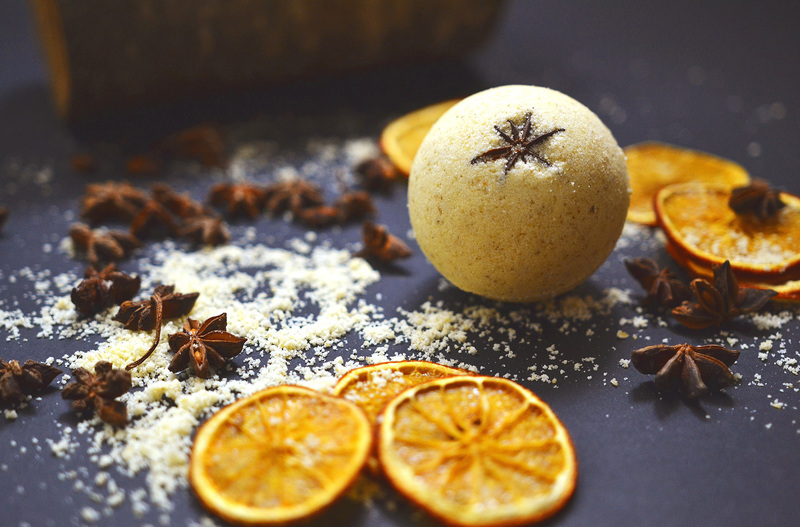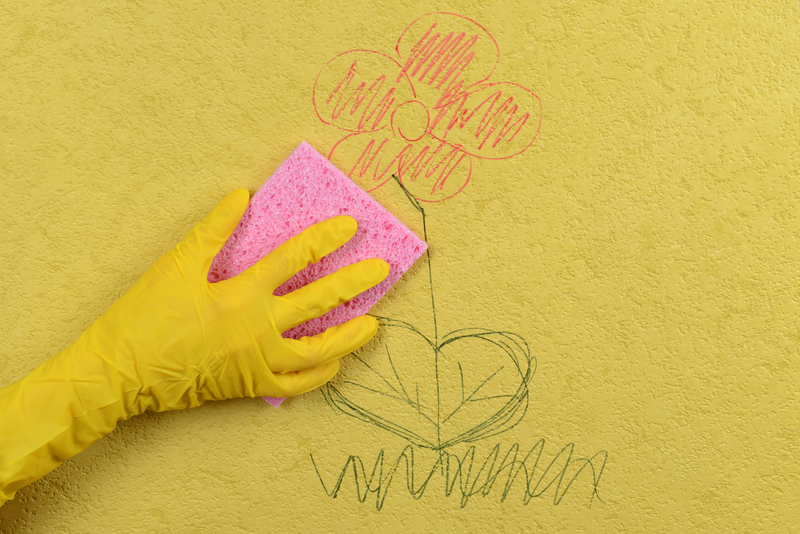Curtain Care: Ensuring Longevity and Cleanliness
Posted on 31/05/2025
Curtain Care: Ensuring Longevity and Cleanliness
Curtains are more than mere window dressing--they are vital components of interior design that enhance aesthetics, provide privacy, and regulate light. However, without proper curtain care, they can become dull, damaged, or accumulate allergens, reducing their appeal and potentially affecting your family's health. This comprehensive guide explores all aspects of curtain maintenance, offering expert tricks to help you keep your drapes looking fresh and lasting longer.
Why Curtain Care Matters
Your curtains are among the first features noticed in any room. Regular and thoughtful curtain cleaning maintains not only their appearance but also extends their lifespan. Neglecting curtain hygiene can lead to:
- Accumulation of dust, pollen, and allergens.
- Color fading due to sunlight exposure and stains.
- Fabric degradation and loss of structural integrity.
- Mildew and unpleasant odors in humid environments.
Ensuring longevity and cleanliness of curtains is essential for a healthy, visually pleasing living space. Well-maintained drapes also save money in the long run by reducing the need for frequent replacements.

Understanding Curtain Types and Materials
Before jumping into washing or vacuuming, it's crucial to recognize that not all curtains are created equal. Appropriate curtain care depends on fabric type. Common curtain materials include:
- Cotton and linen: Breathable, absorbent, and typically machine-washable.
- Polyester blends: Durable, wrinkle-resistant, and easy to clean.
- Silk and velvet: Luxurious, delicate materials requiring gentle handling and often professional care.
- Sheer or lace curtains: Lightweight, usually needing delicate cycles and mild detergents.
- Blackout and thermal curtains: Heavier fabrics containing insulating layers, needing special care to preserve function.
Always read the manufacture label before any cleaning or treatment!
Checking Curtain Labels
Most curtains come with care instructions that specify acceptable cleaning methods. Look for tags indicating:
- Machine wash compatibility
- Hand washing recommendations
- Dry cleaning only
- Maximum water temperature and detergent types
Ignoring these instructions can shorten curtain life and void warranties.
Routine Curtain Maintenance Tips
Regular curtain care keeps your drapes attractive and allergen-free. Here are expert tips for day-to-day upkeep:
1. Frequent Dusting and Vacuuming
Dust can settle on curtain surfaces, dulling their color and exacerbating allergies. Regular dusting is crucial:
- Use a vacuum cleaner with a brush attachment to gently remove dust.
- For delicate fabrics, use a lint roller or shake them outdoors.
- Dust curtain rods and tiebacks to avoid transferring grime back onto clean curtains.
2. Spot Cleaning Stains Promptly
Accidents happen--be they spilled drinks, pet messes, or children's artwork. Spot cleaning is the fastest way to deal with these:
- Use a clean, damp cloth with mild detergent for stains.
- Always blot--never rub--to avoid spreading stains or damaging fibers.
- Test any cleaning solution on a hidden area first.
3. Protecting Against Sun Damage
Sunlight can fade colors, especially for bright or richly dyed curtains:
- Use blinds or sheer curtains behind main drapes for extra UV protection.
- Rotate curtains or change their position regularly to ensure even fading.
- Consider UV-protective sprays for added defense.
4. Regularly Airing Curtains
At least once per month, open windows and allow curtains to air out. This prevents musty odors and mildew, especially in humid or poorly ventilated spaces.
Deep Cleaning of Curtains: Methods and Frequency
Even with routine care, curtains need periodic deep cleaning to remove embedded dirt and prolong their lifespan.
How Often Should You Deep Clean Curtains?
Industry experts recommend full curtain washing:
- Every 3-6 months for heavy-use areas (living rooms, playrooms, kitchens).
- At least once a year for less-used guest or formal rooms.
- More often if anyone in the household has allergies.
1. Machine Washing Curtains
For curtains labeled as machine-washable:
- Remove hooks, rings, and hardware.
- Use a gentle cycle with cold or lukewarm water.
- Choose a mild, non-bleach detergent.
- Wash similar colors together to prevent dye transfer.
- Air dry or tumble dry on low, as high heat can cause shrinkage or damage.
2. Hand Washing
For delicate fabrics (silks, lace, sheers):
- Fill a bathtub or large sink with lukewarm water and a small amount of gentle detergent.
- Soak curtains, then gently agitate to remove dirt.
- Drain and rinse thoroughly.
- Squeeze out excess water--do not wring, as it may wrinkle or tear the fabric.
- Lay flat or hang to dry, ideally out of direct sunlight.
3. Dry Cleaning Curtains
If your curtains are labeled "dry clean only," do not risk water-based cleaning processes. Dry cleaning is the best way to:
- Protect delicate, lined, or specialty fabrics.
- Ensure colorfastness and prevent shrinkage.
- Remove heavy grime or oily stains that home washing cannot address.
Take advantage of seasonal discounts at local dry cleaners for the best value.
4. Steam Cleaning Curtains
A middle ground between surface cleaning and full washes, using a handheld steam cleaner can freshen curtains:
- Hang curtains and pass the steamer over the surface, moving slowly from top to bottom.
- Steam lifts light stains and kills dust mites and bacteria.
- Check fabric compatibility before using steam, especially on synthetics.
Ironing and Steaming: Restoring Curtain Beauty
Wrinkled curtains can appear neglected. Ironing or steaming them helps restore a crisp, polished look.
- Always check label instructions to see if ironing is safe for your fabric type.
- Iron on the reverse side using the appropriate heat level to prevent color loss or shine.
- Use a pressing cloth to protect delicate or patterned curtains from direct heat.
- Steamers are ideal for refreshing pleats or large panels without removing them from rods.
Special Curtain Care Considerations
Caring for Blackout and Thermal Curtains
These specialized curtains usually contain insulating layers or rubberized backing, which can degrade with frequent washing or high heat. For these:
- Spot clean any stains with a mild detergent.
- Vacuum regularly to remove dust.
- Hand wash gently if instructed, and never iron directly on the coated layer.
Sheer and Lace Curtains: Extra Delicate Care
- Always use a laundry bag or pillowcase for extra protection during washing.
- Opt for cold water gentle cycles and avoid heavy spin settings.
- Air dry flat to prevent stretching or distortion.
Tassels, Embellishments, and Decorative Elements
- Remove detachable trims before cleaning.
- Never machine wash beaded or metallic elements--use dry cleaning or spot cleaning only.
Preventing Curtain Damage for Long-Term Longevity
Proactively caring for your curtains will maximize their life and save you money over time. Here are actionable prevention strategies:
- Install curtain tiebacks to reduce everyday wear and keep fabric off the floor, minimizing dust and pet contact.
- Rotate panels periodically so fabric exposed to direct sunlight wears evenly.
- Use lined curtains or attach an additional liner to protect decorative fabric.
- Keep windows clean to prevent outside grime from transferring to curtains on windy days.
- Avoid hanging wet curtains on metal rods to prevent rust marks or stains.
Allergy and Health Benefits of Clean Curtains
Clean curtains don't just look good--they promote health. Here's how proper curtain cleaning supports well-being:
- Removes dust mites, pet dander, and pollen that trigger allergies and asthma.
- Prevents mold and mildew, especially in bathrooms and kitchens.
- Reduces odors, keeping indoor air fresher.
- Improves overall air quality, creating a safe haven for babies, elderly family members, and immune-compromised individuals.
Smart Storage for Curtains in the Off-Season
If you rotate your curtains seasonally or during renovations, proper storage will prevent damage:
- Dry curtains thoroughly before storing--moisture leads to mold.
- Roll rather than fold to prevent creases and fiber stress.
- Use cotton storage bags or pillowcases rather than plastic, which can trap moisture and odors.
- Store in a cool, dry, and dark place, away from pests and direct sunlight.
DIY Curtain Freshening Hacks
- Baking soda sprinkle: Lightly sprinkle baking soda over dry curtains, wait 30 minutes, and vacuum to remove odors.
- Vinegar spray: Mix water and white vinegar in a spray bottle (3:1 ratio), lightly spritz, and let air dry for odor elimination (test on fabric first).
- Fabric refreshers: Commercial or homemade sprays give curtains a just-washed fragrance between deep cleans.
When to Replace Curtains
No matter how well you care for your curtains, there comes a time when replacement is necessary:
- Persistent odors or stains that don't come out with cleaning.
- Fraying, tears, or holes in the fabric that cannot be mended.
- Lining that is crumbling or degrading, which affects insulation and privacy.
- Changes in interior decor--a fresh set of curtains can transform a room.
Sustainable Curtain Care: Eco-Friendly Cleaning Solutions
- Opt for biodegradable detergents and natural cleaning sprays.
- Air dry whenever possible to save energy.
- Repurpose old curtain fabric for cushions or crafts rather than discarding.

Professional Curtain Cleaning: When to Choose the Experts
Sometimes, entrusting your curtains to cleaning professionals is the best way to ensure long-term cleanliness and fabric preservation:
- For stubborn stains, delicate or antique curtains, or extra-large drapes.
- If curtains are too heavy to handle at home or require specialized treatment.
- Professional services use commercial-grade machines and proper drying techniques to prevent shrinkage and damage.
Conclusion: The Value of Consistent Curtain Care
Long-lasting curtains are a result of attentive, regular care. By embracing a combination of daily habits, scheduled deep cleans, and timely prevention tactics, you not only safeguard your investment but also promote a healthier and more beautiful home. Whether you have modern sheers or classic velvet drapes, the principles of curtain maintenance remain the same: know your fabric, respect care labels, clean routinely, and protect against everyday hazards.
Make curtain care part of your cleaning routine, and your window treatments will reward you with years of privacy, comfort, and style.




